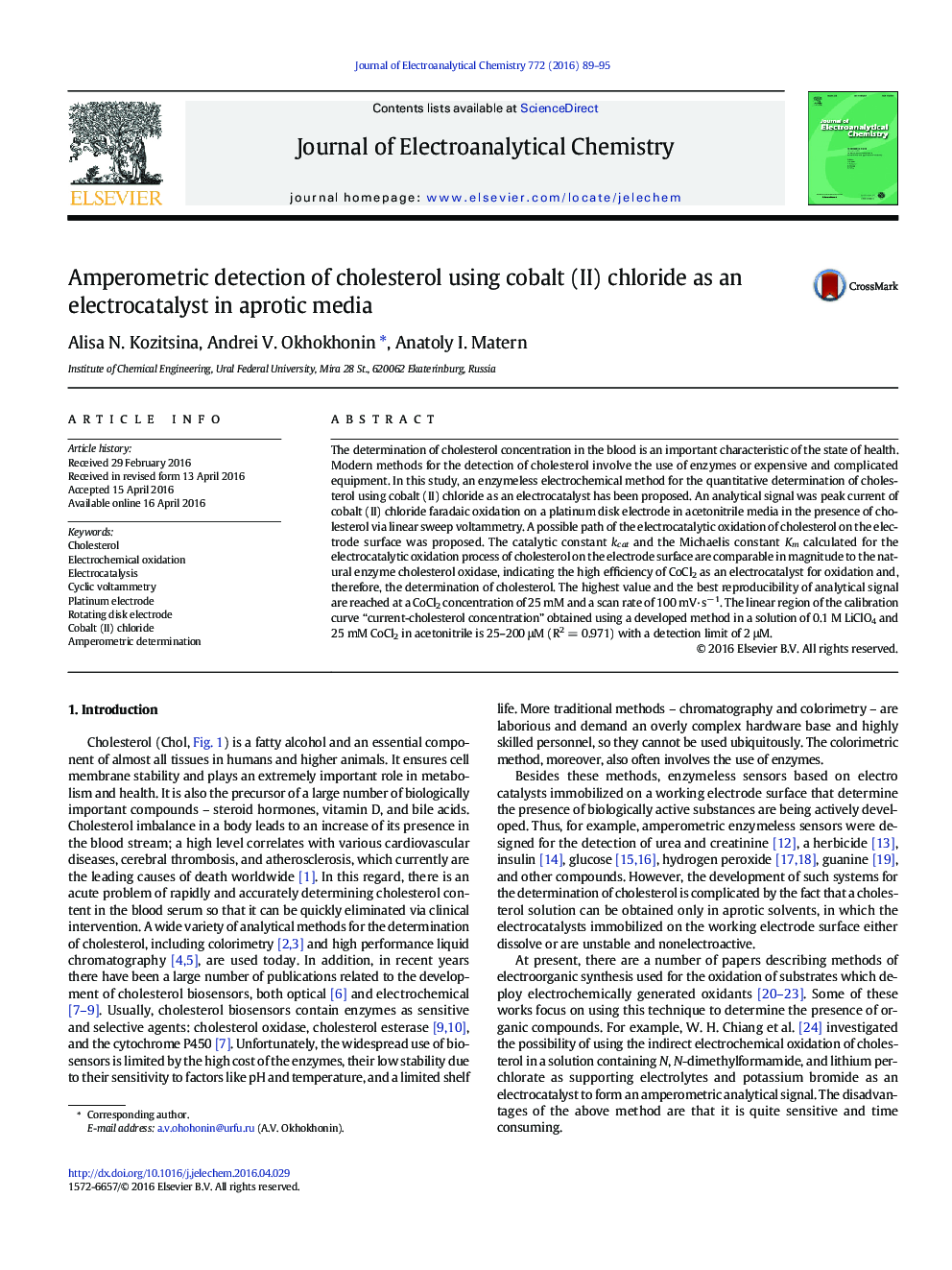| Article ID | Journal | Published Year | Pages | File Type |
|---|---|---|---|---|
| 217895 | Journal of Electroanalytical Chemistry | 2016 | 7 Pages |
•An enzymeless electrochemical cholesterol determination method has been proposed.•Cobalt (II) chloride was used as electrocatalyst for cholesterol oxidation.•Analytical characteristics of the proposed method were calculated.•Cobalt (II) chloride as cholesterol oxidation catalyst is comparable to cholesterol oxidase.
The determination of cholesterol concentration in the blood is an important characteristic of the state of health. Modern methods for the detection of cholesterol involve the use of enzymes or expensive and complicated equipment. In this study, an enzymeless electrochemical method for the quantitative determination of cholesterol using cobalt (II) chloride as an electrocatalyst has been proposed. An analytical signal was peak current of cobalt (II) chloride faradaic oxidation on a platinum disk electrode in acetonitrile media in the presence of cholesterol via linear sweep voltammetry. A possible path of the electrocatalytic oxidation of cholesterol on the electrode surface was proposed. The catalytic constant kcat and the Michaelis constant Km calculated for the electrocatalytic oxidation process of cholesterol on the electrode surface are comparable in magnitude to the natural enzyme cholesterol oxidase, indicating the high efficiency of CoCl2 as an electrocatalyst for oxidation and, therefore, the determination of cholesterol. The highest value and the best reproducibility of analytical signal are reached at a CoCl2 concentration of 25 mM and a scan rate of 100 mV·s− 1. The linear region of the calibration curve “current-cholesterol concentration” obtained using a developed method in a solution of 0.1 M LiClO4 and 25 mM CoCl2 in acetonitrile is 25–200 μM (R2 = 0.971) with a detection limit of 2 μM.
